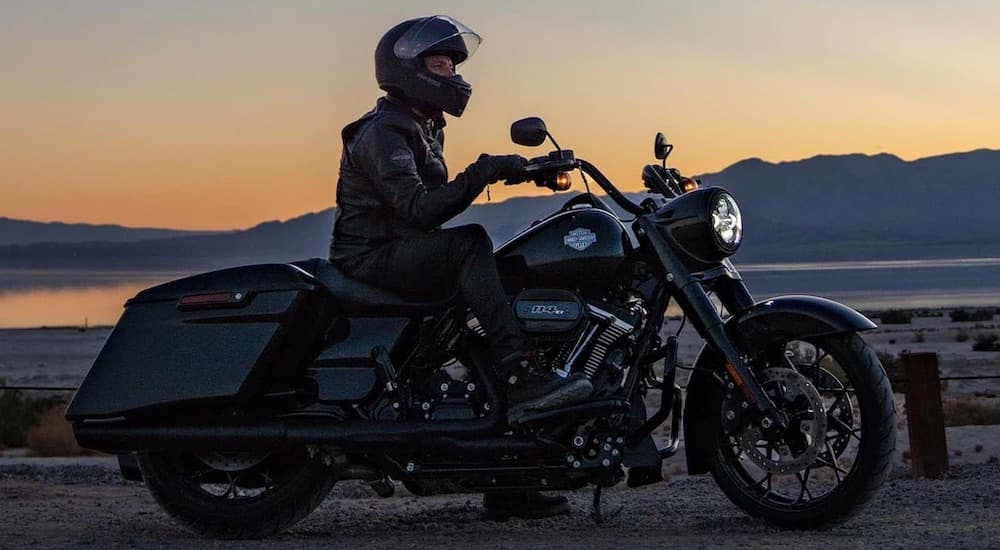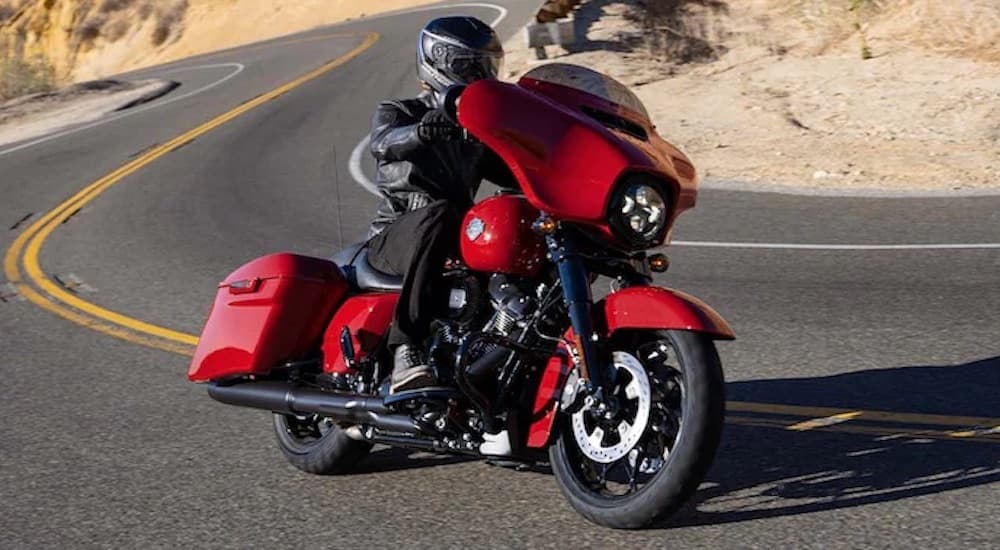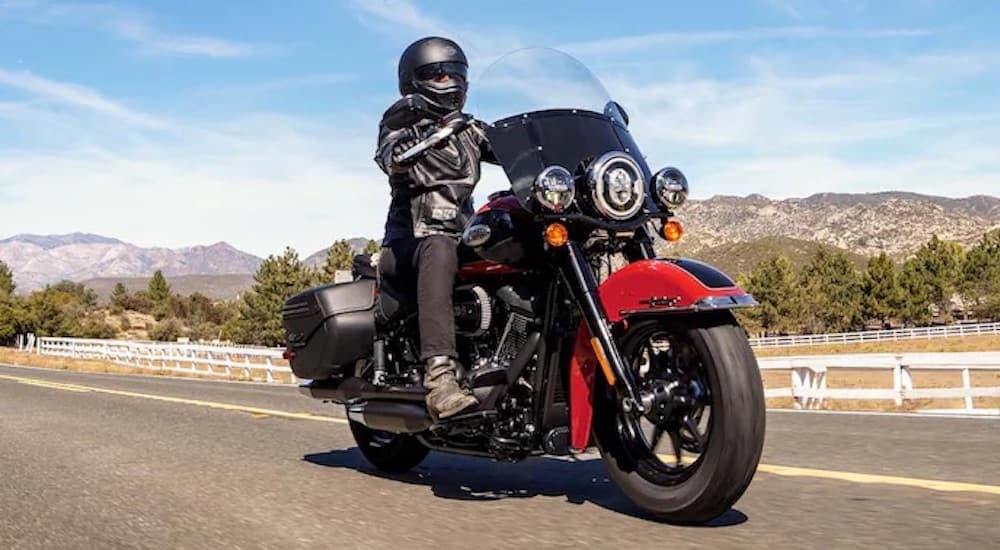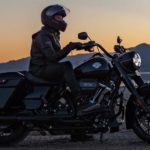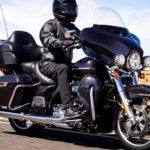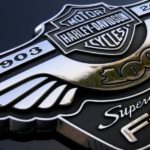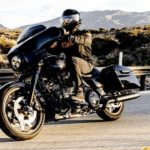What’s more American than Harley-Davidson? You’d be hard-pressed to find an alternative in the motorcycle industry, and if you did, die-hard Harley-Davidson riders clad in leather would find plenty of reason to disagree. As many intimately know, Harley-Davidson isn’t just a motorcycle brand; it’s a lifestyle and culture that’s defined the American landscape since the 1900s. Today, this culture inspires riders of all ages to climb in the saddle of new, used, and Certified Pre-Owned Harley-Davidson bikes and bring their hog dreams to life. After all, many argue that you haven’t really ridden until you’ve chased the horizon on a Harley-Davidson.
But what is this culture, and how did it start? How did Harley-Davidson evolve from a group of friends tinkering in a toolshed in a Wisconsin backyard to playing an integral role in World War II? And, just as important, how did the soldiers in World War II give rise to the Harley-Davidson counterculture that’s ingrained in America today? Like riding one mile at a time, let’s take one question at a time.
The Ingenuity of Toolshed Tinkering
William Harley and Arthur Davidson became instant friends in their Milwaukee neighborhood when they bonded over their fascination with bicycles. The boys spent their free time tinkering in a backyard toolshed, eventually building their first motorcycle prototype. The prototype was a flop, but it was so much more than that. It was a crossroads in the friends’ lives. Should they see the failure as a lack of ingenuity and expertise and call it quits? Or could they learn from it and pursue their passions with a different strategy?
William and Arthur learned a valuable lesson: they needed more experience and expertise, both reliant on time. However, they weren’t willing to give up on their passion, so they turned to Arthur’s older brothers, William and Walter, for help. With Walter, an experienced machinist, and William, a talented mechanic, on board, the brothers and friends quickly got to work.
They completed the first-ever Harley-Davidson motorcycle in 1904, entering the bike in a motorcycle race to test its operability. Although the motorcycle didn’t win the race, the friends knew they were onto something. They spent the next few years fine tuning the design before advertising it in local newspapers.
By 1907, Harley-Davidson incorporated and opened its first factory, with Walter Davidson serving as President, William Harley as Chief Engineer, Arthur Davidson as General Sales Manager, and William Davidson as Works Manager. Demand for motorcycles gradually increased as Arthur fulfilled his role incredibly well, appealing to the United States Postal Service and police departments nationwide to invest in motorcycle fleets. Arthur also signed a contract with the military to produce 20,000 motorcycles for American troops during World War I.
With the ingenuity of the entire team, Harley-Davidson continued to grow, especially with the company developing its two-cylinder “V-Twin” engine. Delivering more power and faster speeds made Harley-Davidson bikes hot commodities, but not more so than after World War II. By then, the Milwaukee friends experienced a new level of success, one they never envisioned tinkering in a cramped toolshed in the 1900s.
Serving the War Efforts: The World War II Impact
Harley-Davidson became integral to American troops at the dawn of World War II when the company signed a contract to produce over 60,000 motorcycles for the American military. While tanks and armored vehicles are often associated with the military, motorcycles provide a unique advantage because they are easy to ship between locations and offer unprecedented mobility. With a bike like the Harley-Davidson WLA, soldiers could patrol and perform reconnaissance, transporting small equipment and information as needed.
1st Lieutenant John Harley played an integral role in the war efforts because, like the Harley-Davidson motorcycle, he was on the front lines. Lt. Harley shared his passion for motorcycles, a natural enthusiasm inherited from his father, the legendary William Harley of the infamous Wisconsin toolshed days. However, Lt. Harley did even more than that. The curator at the U.S. Army Armor and Cavalry Collection at Fort Benning, Georgia, reports that Lt. Harley spent his free time at Fort Knox, where he tinkered with motorcycles and showed fellow soldiers how to modify models like the WLA to make them faster beyond their already impressive top speed of 65 mph.
Veterans Give Rise to the Chopper Counterculture
Following the war, the military sold the motorcycles at rock-bottom pricing to get rid of the fleet. As a result, veterans had the chance to experience a different type of riding as they returned to their civilian lives, a much different America than when they left. This experience, however, was two-fold. First, as with experiencing the effects of war, veterans returned with a different perspective on life at home. America’s conservative landscape didn’t match their experiences abroad, leaving many with a sense of unrest that served as the breeding ground for the counterculture movement that soon defined the Harley-Davidson brand.
Second, the American military motorcycles were sold as-is. In the modern industry, “as-is” means various things, from modifications like upgraded saddlebags to no warranty coverage due to age or mileage. However, after World War II, the modifications on the Harley-Davidson military bikes were remarkably different. The motorcycles were enhanced to meet tactical needs, fitted with racks to carry submachine guns and rifles, optics for night vision, and other equipment. None of these features mattered in the civilian world, which led riders to strip the bikes of their modifications to better suit everyday riding. Thus, the American Chopper was born and forever ingrained with the Harley-Davidson brand.
A Little Help from Hollywood
Motorcycle sales skyrocketed after World War II, with registered bikes rising from 198,000 in 1945 to 2.8 million in 1970. Veterans had a lot to do with this growing demand. After all, who better to set a new trend than the soldiers who fought for our freedom? Before long, civilian riders jumped on the American Chopper bandwagon, and demand for stripped-down hogs skyrocketed. Harley-Davidson’s fate was sealed.
Another integral shift occurred when Harley-Davidson got a little (or a lot) of help from Hollywood when Peter Fonda, Dennis Hopper, and Jack Nicholson took the silver screen by storm in the 1969 flick Easy Rider. An iconic countercultural film, Easy Rider is a showcase of America in the 1960s, highlighting everything from hippies and the prominent use of drugs to the popularity of communal living and the appeal of living life on the road from the saddle of a Harley-Davidson road hog. As a result, the award-winning film became culturally significant and helped solidify the counterculture established among motorcyclists after World War II.
Selling a Lifestyle, Building a Culture
Between veterans looking for open-air freedom and films like Easy Rider, Harley-Davidson capitalized on the countercultural movement in post-war America. Instead of selling motorcycles, which it did, Harley-Davidson became a lifestyle brand with devoted followers unapologetically passionate about their bikes and the meaning behind the Harley-Davidson name. Even the Harley-Davidson elite recognized as much, with Willie Davidson, grandson of founder William Davidson, once saying, “We’re in the fashion business. No one needs a motorcycle. It’s your toy or hobby. It has to do something for your ego.”
Today, Harley-Davidson is more than a motorcycle brand. It’s a lifestyle ingrained in the American landscape and defined by the individuals that fought for our freedom decades ago. While those veterans sought a different type of freedom on the open road, their search led them to chase the same horizon Harley-Davidson riders chase today, tomorrow, and every day after. It’s the restless pursuit of open-air freedom and an outlaw spirit that binds the Harley-Davidson family together, from William and Arthur tinkering in a toolshed to you and your friends riding across state lines for an epic adventure.
